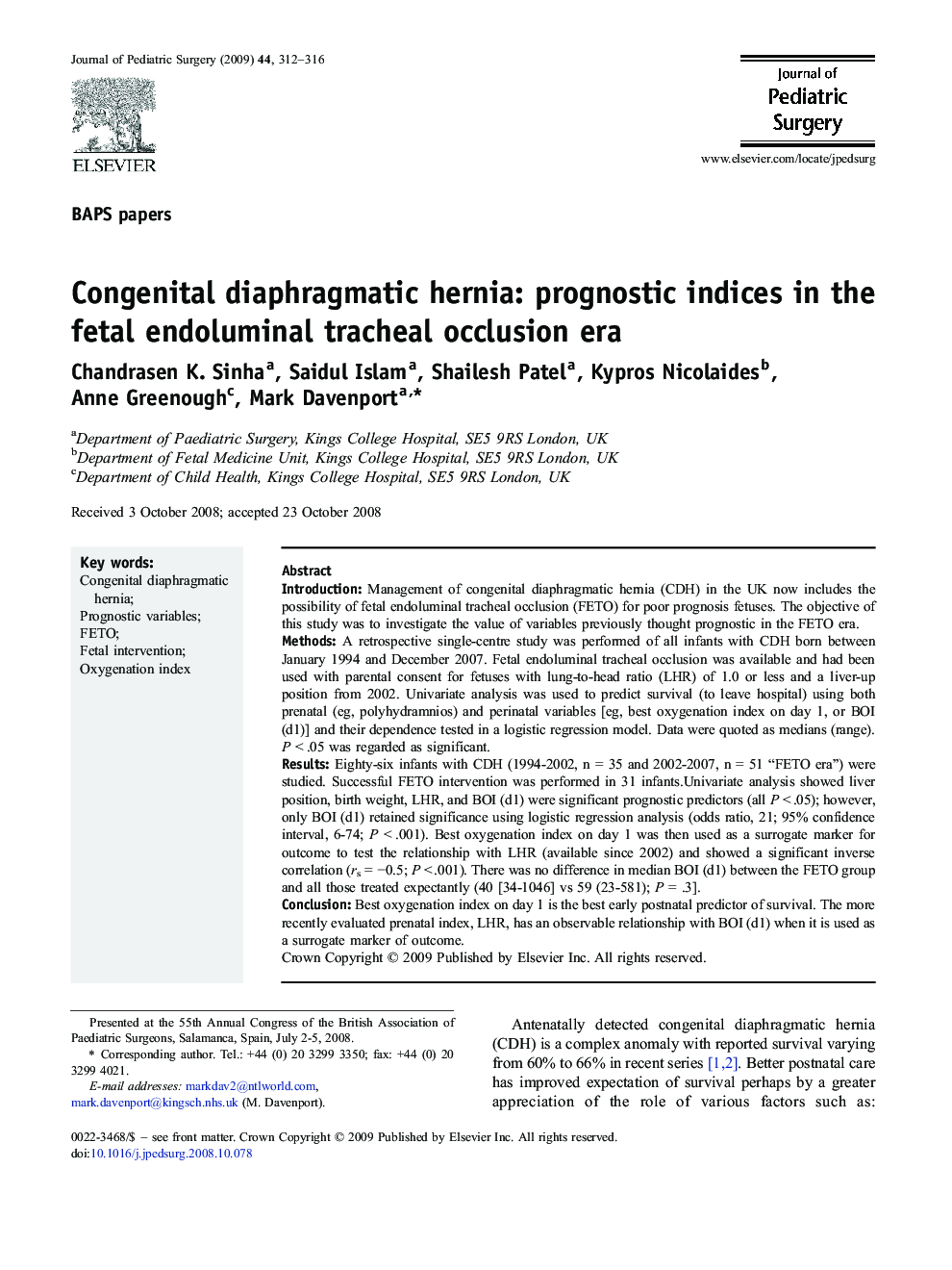| کد مقاله | کد نشریه | سال انتشار | مقاله انگلیسی | نسخه تمام متن |
|---|---|---|---|---|
| 4158615 | 1273814 | 2009 | 5 صفحه PDF | دانلود رایگان |

IntroductionManagement of congenital diaphragmatic hernia (CDH) in the UK now includes the possibility of fetal endoluminal tracheal occlusion (FETO) for poor prognosis fetuses. The objective of this study was to investigate the value of variables previously thought prognostic in the FETO era.MethodsA retrospective single-centre study was performed of all infants with CDH born between January 1994 and December 2007. Fetal endoluminal tracheal occlusion was available and had been used with parental consent for fetuses with lung-to-head ratio (LHR) of 1.0 or less and a liver-up position from 2002. Univariate analysis was used to predict survival (to leave hospital) using both prenatal (eg, polyhydramnios) and perinatal variables [eg, best oxygenation index on day 1, or BOI (d1)] and their dependence tested in a logistic regression model. Data were quoted as medians (range). P < .05 was regarded as significant.ResultsEighty-six infants with CDH (1994-2002, n = 35 and 2002-2007, n = 51 “FETO era”) were studied. Successful FETO intervention was performed in 31 infants.Univariate analysis showed liver position, birth weight, LHR, and BOI (d1) were significant prognostic predictors (all P < .05); however, only BOI (d1) retained significance using logistic regression analysis (odds ratio, 21; 95% confidence interval, 6-74; P < .001). Best oxygenation index on day 1 was then used as a surrogate marker for outcome to test the relationship with LHR (available since 2002) and showed a significant inverse correlation (rs = −0.5; P < .001). There was no difference in median BOI (d1) between the FETO group and all those treated expectantly (40 [34-1046] vs 59 (23-581); P = .3].ConclusionBest oxygenation index on day 1 is the best early postnatal predictor of survival. The more recently evaluated prenatal index, LHR, has an observable relationship with BOI (d1) when it is used as a surrogate marker of outcome.
Journal: Journal of Pediatric Surgery - Volume 44, Issue 2, February 2009, Pages 312–316